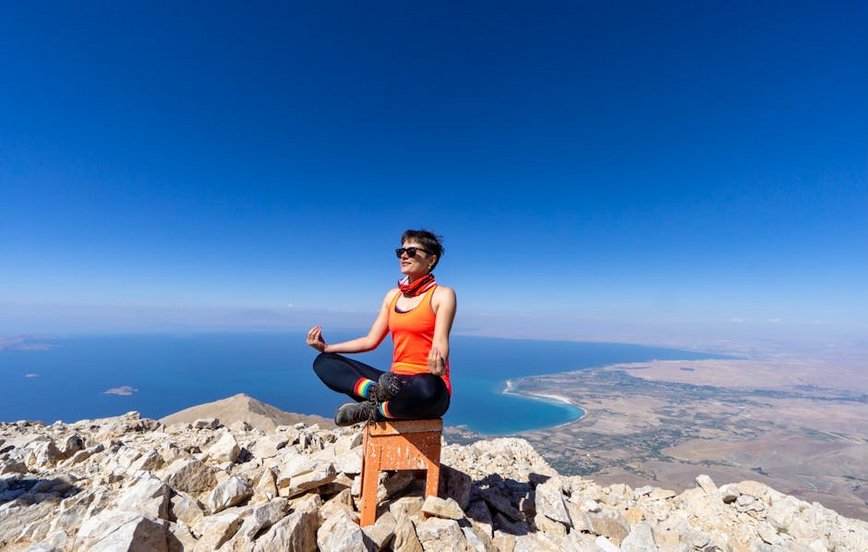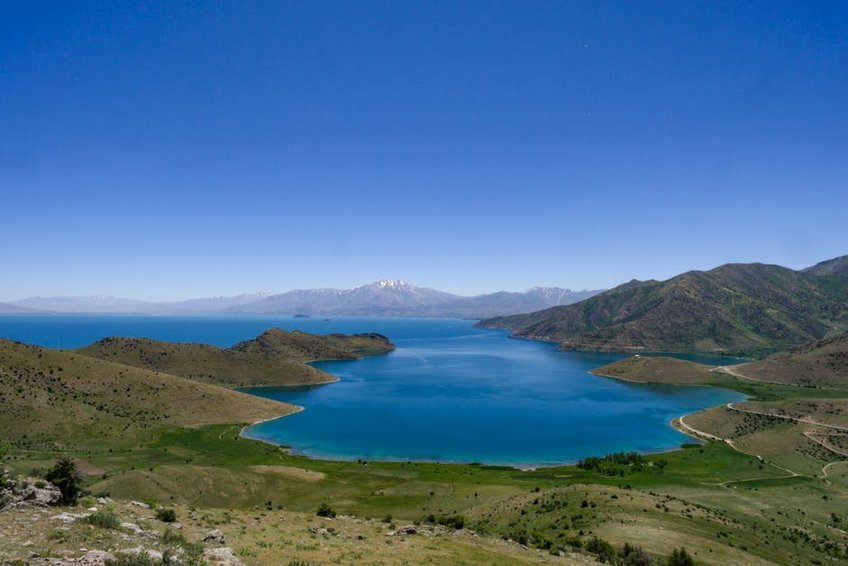Local Flavors Around Lake Van
Exploring the local flavors around Lake Van offers one of Turkey’s most unique culinary adventures, where ancient traditions meet breathtaking landscapes. As Turkey’s largest lake, Van provides not just stunning views but an incredible food culture that has developed over millennia. The region’s isolation and distinct climate have created culinary traditions found nowhere else in the world, with specialties that will surprise and delight your palate. From breakfast traditions that last for hours to cheeses aged in sheepskin, the Van culinary experience represents authentic Turkish hospitality at its finest. You’ll discover why food lovers consider this region a hidden gem worth traveling for, with flavors that tell the story of Armenian, Kurdish, and Turkish cultures blending harmoniously. Prepare your taste buds for an unforgettable journey through one of Anatolia’s most fascinating culinary landscapes where every meal becomes a memorable experience.
Local Flavors Around Lake Van – Essential Information
Understanding the culinary landscape around Lake Van requires appreciating its unique geographical and cultural context. Situated in eastern Turkey at an altitude of 1,640 meters, the lake’s microclimate and mineral-rich waters create distinctive ingredients found nowhere else. The region’s cuisine reflects its history as a crossroads of civilizations, with Armenian, Kurdish, and Turkish influences creating a fusion that’s both ancient and vibrant. What makes Van’s food culture special is how traditional methods have been preserved while adapting to modern tastes. You’ll find that meals here are events rather than just sustenance, often lasting hours and involving multiple courses that showcase the region’s agricultural bounty. The people of Van take immense pride in their culinary heritage, and as a visitor, you’ll be welcomed into this food-loving culture with open arms and generous portions.
Van Culinary Heritage – What You Need to Know
- Van breakfast (Van Kahvaltısı) is a legendary multi-course meal featuring over 30 different items including cheeses, jams, breads, and eggs
- Otlu peynir, the famous herb cheese, contains up to 18 different mountain herbs that grow only in this region
- Traditional cooking methods include stone ovens (tandır) and open-fire cooking that impart unique smoky flavors
- Many recipes have been passed down through generations with minimal changes, preserving ancient flavors
- Budget travelers can enjoy fantastic street food and local restaurants for $15-25 per day, with simit (sesame rings) costing $0.50, gözleme (stuffed flatbread) $2-3, and simple meals $5-7
- Mid-range dining including proper Van breakfast experiences and nice restaurants runs $35-50 daily, with traditional breakfast spreads costing $10-15 per person and restaurant meals $8-12
- Luxury culinary tours with private guides, cooking classes, and premium experiences average $100-150 daily, including specialty food purchases and unique dining experiences
- Official Turkish Tourism Portal – Van Region
- BBC Travel – Van Breakfast Culture
- Cultural Survival – Van Culinary Heritage
Key Ingredients – The Foundation of Van Cuisine
The ingredients that define Van’s cuisine come directly from its unique environment. The mineral-rich waters of the lake influence the taste of locally caught fish, while the high altitude and volcanic soil create herbs and grains with intense flavors. You’ll notice that dairy products feature prominently, thanks to the region’s tradition of sheep and goat herding. The famous Van cattle produce milk with higher fat content, resulting in richer dairy products. Wild herbs gathered from mountain slopes add distinctive notes to cheeses and dishes, while locally grown grains like emmer wheat provide the base for traditional breads. What makes these ingredients special isn’t just their quality but how they’re combined using techniques perfected over centuries, creating flavors that simply can’t be replicated elsewhere.

Local Flavors Around Lake Van – Planning Your Culinary Journey
Planning your culinary exploration around Lake Van requires considering seasonal availability and local customs. The best food experiences often happen at specific times of year when ingredients are at their peak, and many traditional dishes are prepared for particular festivals or seasons. You’ll want to coordinate your visit with harvest periods for the most authentic experiences, as many restaurants and homes cook with what’s freshly available rather than imported ingredients. Budgeting for food experiences here differs from typical Turkish travel, as Van’s specialty items can range from incredibly affordable street food to lavish traditional breakfast spreads that justify higher price points. Remember that dining here is as much about the experience as the food itself – meals are social events that unfold gradually, so allocate sufficient time for truly immersive culinary adventures.
Best Time to Visit for Food Experiences
The ideal time for experiencing Van’s local flavors depends on what you want to taste. Spring (April-June) offers the freshest herbs for otlu peynir and beautiful wild greens in salads and dishes. Summer (July-August) brings fruit harvests including famous Van peaches and cherries for preserves and fresh eating. Autumn (September-October) provides the best conditions for cheese production and meat dishes as animals fatten on summer pastures. Even winter has its culinary charms with preserved foods and hearty stews. For the most comprehensive experience, consider late spring when both fresh herbs and early fruits are available, allowing you to taste the full range of Van’s culinary offerings. The weather during this period is also perfect for exploring both the lake shores and mountain villages where many food traditions originate.
Budget Planning and Food Costs
Essential Preparation Checklist
Preparing for your culinary journey around Lake Van involves both practical and cultural considerations. Ensure you have comfortable walking shoes for exploring food markets and villages, as the best flavors often require some exploration. Bring medications for potential stomach sensitivity, as the rich dairy products and new ingredients might challenge your system initially. Learn a few basic Turkish phrases related to food ordering and compliments – locals appreciate effort with their language. Research dietary restrictions in advance if you have them, as some traditional dishes contain specific ingredients that might not be immediately obvious. Most importantly, come with an adventurous palate and flexible schedule, as the best food experiences often happen spontaneously when you least expect them, whether it’s an invitation to a local home or discovering a small village producer of exceptional cheeses.
Local Flavors Around Lake Van – Top Culinary Experiences
Your culinary journey around Lake Van should include both famous specialties and hidden gems that few tourists discover. The region offers an incredible diversity of food experiences, from organized tasting tours to spontaneous market discoveries. You’ll want to prioritize experiences that showcase Van’s unique ingredients and traditional preparation methods, as these provide the most authentic taste of the region. Many visitors focus solely on the famous breakfast, but truly understanding Van’s food culture requires exploring its street food, home cooking, and seasonal specialties. The best approach involves balancing planned meals with spontaneous discoveries, allowing you to experience both the celebrated dishes and the everyday foods that locals enjoy. Remember that some of the most memorable flavors might come from simple village homes or small market stalls rather than fancy restaurants.
Must-Try Dishes and Specialties
No visit to Van is complete without trying these iconic dishes that define the region’s cuisine. Start with Van breakfast, an elaborate spread featuring otlu peynir (herb cheese), kaymak (clotted cream), multiple types of honey and jam, fresh breads, eggs cooked various ways, and numerous mezes. Sample murtuğa, a unique dish made from roasted wheat, butter, and meat that showcases ancient preparation methods. Seek out Van kebabs, which differ from elsewhere in Turkey through their specific spicing and cooking techniques. Don’t miss trying keledoş, a hearty soup made with meat, chickpeas, and yogurt that represents comfort food for locals. For dessert, find Van’s famous peach desserts or güllaç, a milk-based pastry available during certain seasons. Each of these dishes tells a story about the region’s history and environment, making them essential tasting experiences.
Hidden Gems and Local Favorites
Beyond the famous dishes, Van hides numerous culinary treasures that require local knowledge to discover. Seek out village women selling homemade preserves and pickles at small markets – their products often surpass anything available commercially. Look for restaurants serving içli köfte (stuffed bulgur balls) made with wild herbs gathered from the mountains. Discover the simple pleasure of fresh trout from the lake, grilled simply with local herbs and lemon. Find small bakeries producing traditional tandır bread baked in stone ovens for that authentic smoky flavor. During spring, ask about dishes made with fresh wild greens like sirken and kenger that are foraged from the countryside. These lesser-known experiences often provide the most authentic connections to Van’s food culture, as they represent what locals actually eat rather than what’s promoted to tourists.
Local Flavors Around Lake Van – Practical Food Tourism Information
Navigating Van’s food scene requires understanding practical aspects from transportation between culinary destinations to choosing where to eat. The region spans a large area, and the best food experiences often require traveling between the city of Van, lakeside villages, and mountain communities. You’ll find that dining options range from simple street stalls to established restaurants specializing in particular dishes, with quality often having little correlation with appearance. Communication can be challenging outside main tourist areas, so learning food-related Turkish phrases will significantly enhance your experience. Budget considerations should include not just meal costs but transportation between food destinations and potential purchases of local products to bring home. The most successful culinary travelers combine advance research with flexibility, allowing them to follow recommendations from locals while still hitting their must-try dishes.
| Dining Category | Experience Features | Price Range (USD) |
|---|---|---|
| Street Food | Simit, gözleme, roasted chestnuts, fresh juices | $1-5 per item |
| Local Restaurants | Home-style cooking, daily specials, family-run establishments | $5-12 per meal |
| Van Breakfast Specialists | Multi-course traditional breakfast with unlimited tea | $10-20 per person |
| Fine Dining | Modern interpretations of traditional dishes, lake views | $25-40 per person |
| Cooking Classes | Hands-on instruction with local chefs, market visits | $40-60 per session |


